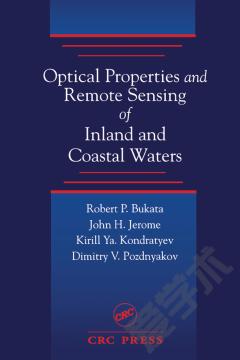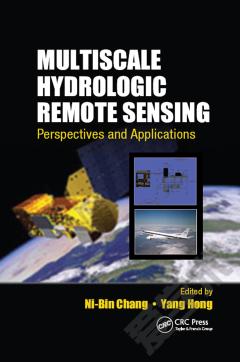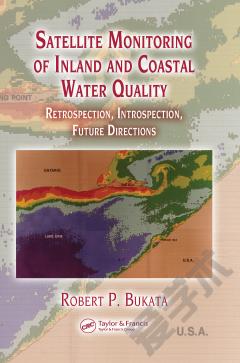Optical Properties and Remote Sensing of Inland and Coastal Waters
Introductory Theory Aquatic Optics The Nature of Electromagnetic Radiation and Light Radiance and Irradiance Attenuation of Light in an Aquatic Medium Spectral Albedo Environmental Remote Sensing and Space Science Remote Measurements Above Water The Boundary Conditions of the Considered Problem Incident Radiation The Sun and Extraterrestrial Solar Radiation Atmospheric Attenuation and Global Radiation Stratospheric Ozone and Ultraviolet Solar Radiation Clouds Diffuse Sky Radiation Water Surface Albedo The Propagation of Atmospheric Photon Fluxes into Natural Waters Optical Classification of Natural Waters Photon Interactions with the Air-Water Interface The Impact of Wave Slope on Reflection from the Air-Water Interface Satellite Sensor, Sunglint, and Curvature of the Earth Apparent and Inherent Optical Properties of Natural Waters Monte Carlo Simulations of Photon Propagation Bulk and Specific Inherent Optical Properties Dependence of the Underwater Light Field on Solar Zenith Angle and Sky Irradiance Composition of Natural Waters The Aquatic Food Chain (Trophic Levels) Pure Water Dissolved Salts and Gases Dissolved Organic Matter Suspended Matter Air Bubbles Cumulative Optical Impact of the Aquatic Components The Impact of Chlorophyll, Suspended Minerals, and Dissolved Organic Carbon on Volume Reflectance Optical Cross Sections Multi-Component Optical Model for Natural Waters Impact of Chlorophyll on Volume Reflectance Spectra Impact of Suspended Minerals on Volume Reflectance Spectra Impact of Dissolved Organic Matter on Volume Reflectance Spectra Volume Reflectance in Non-Case I Water Bodies Containing Moderate to High Concentrations of Dissolved Organic Matter Volume Reflectance at a Single Wavelength Deconvolving the Aquatic Organic and Inorganic Components from the Volume Reflectance Spectra Multivariate Optimization as a Means of Deconvolving the Aquatic Organic and Inorganic Concentrations From the Volume Reflectance Spectra Chromaticity and the Colour of Natural Waters Colour and Volume Reflectance Photometric Units Colorimetric System: Chromaticity Chromaticity as a Means of Estimating Aquatic Component Concentrations Chromaticity and Remote Sensing Observations of Optical Properties of Natural Waters (The Laurentian Great Lakes) Introductory Remarks The Secchi Disk and Attenuation of Subsurface Irradiance Beam Transmission, T(l,z) The Nepheloid Layer Irradiance Attenuation Coefficient for PAR Photosynthetic Usable Radiation, PUR Photic Depth Spectral Band Values of Irradiance Attenuation Coefficients Subsurface Sighting Range The Trophic Status of Natural Water Optics and the Status of the Great Lakes Remote Sensing Over Natural Water Upwelling Radiation Through the Air-Water Interface Accounting for Atmospheric Intervention Radiative Transfer Models Existing Atmospheric Correction Models A Thematic Mapper Illustration Remote Sensing of Water Quality Parameters A Very Brief Inventory of Environmental Satellites Primary Production in Natural Water Photosynthesis Phytoplankton Photosynthesis (Primary Production) Remotely Estimating Phytoplankton Photosynthesis Phytoplankton Primary Production from Estimates of Aquatic Chlorophyll Chlorophyll and Biomass of Ocean Waters Chlorophyll and Biomass of Inland and Coastal Waters Protocol for Remotely Estimating Primary Production in Non-Case I Waters Available Light for Photochemical and Photobiological Activity An Example of Primary Production in Ladoga Lake Aquatic Remote Sensing in Regional and Global Environmental Monitoring Ecosystems at Risk Satellites and Global Change Satellites and Hydrology Climate Change Effects of Enhanced UV-B on Phytoplankton Photosynthesis Global Water Bodies and the Gaia Hypothesis Remote Sensing and Water Quality
{{comment.content}}








 京公网安备 11010802027623号
京公网安备 11010802027623号